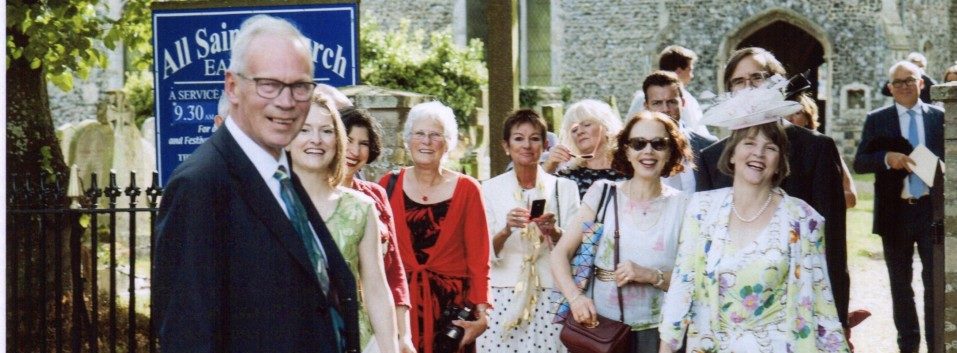Russell and his mother had lots of anecdotes about the wartime. One, told me by Ma, was about a car journey that she and Pa were taking with a lady from Yagnub called Mrs Sidney Owles. Sidney can be a girl’s name of course, but it wasn’t here: her husband was Mr Sidney Owles. I have no idea why she was always given her full, formal title, but I suppose there were other Mrs Owlses and it was for clarity. The Owles family still has a business in Yagnub.
It must have been at a time of petrol rationing so there was a good reason for the journey. On the way home, coming along a pitch black country road with just sidelights to show the way, they were frightened by an enemy aircraft swooping down without warning. Pa switched off the lights but the pilot either knew where the main road was or had seen the thin beams. Shots raked along the road and Pa and Ma ran for it and dived into the ditch. Once there, they realised that Mrs Sidney Owles hadn’t joined them – and they thought she’d been caught in the gunfire. It was all over in seconds, the plane was on its way home and just taking potshots with the last of the ammunition. They returned to the car, reluctant to look. Mrs Sidney sat there, splendid in her fur coat. She wasn’t risking it to a ditch and would rather face Hitler.
Most things were rationed, of course, but the family kept chickens and a house cow called Molly. She was small and black – a Dexter, perhaps. The lean-to shed by the big barn is still called the black cowshed and it was where Molly lived. There’s several acres of grass on the two fields so I suppose a farmer grazed cattle there during the summer. They’re unsuitable for ploughing as they sometimes flood (much less frequently now than then, because a weir was built upriver after the war) or else they would have been used for crops. I don’t know what Molly thought about living on her own in the winter, assuming she did, nor what she thought about her calf being taken away from her at its birth. Apparently, if the cow never sees it or has a chance to feed and lick it, she doesn’t realise what has happened and isn’t upset, so it’s kinder than removing a calf after a few days. This is what Ma told me, anyway. I guess that the calf went off to the farm to be reared. The first few milkings, the colostrum, would have been sent for its first feeds. Pa and Ma never kept a pig, though a lot of country people did. They were great friends with the Skinners, over the fen and up the hill on the other side of the Roman road and Mrs Skinner would tip Ma the wink when there was any spare butter or cream. She’d phone for a chat and, of course, could never be sure the woman at the exchange wouldn’t be listening in, so they used code – something simple like a remark on the weather.
Any of you who are much younger than I am wouldn’t remember this, but you used to be put through manually to the person you were phoning. You picked up the phone and a voice said “number please?” This house was Yagnub 36 and it’s always had the same number, though of course it’s been added to several times, it’s now an eleven digit number.

I do love this genre of posts.